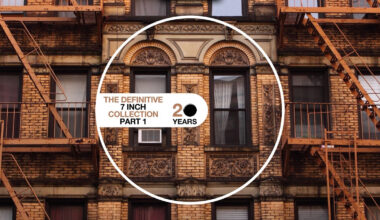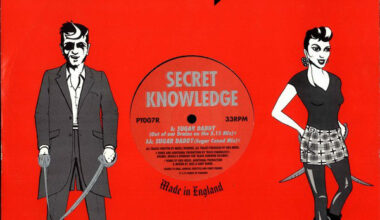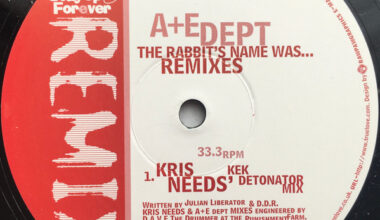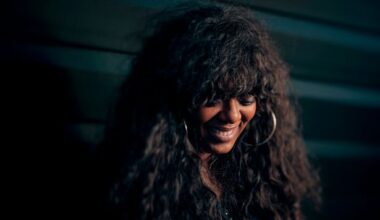Freewheeling through time and space, our renegade columnist ventures out on his further adventures in audio. This month, Jimi Hendrix…

I remember the night of 18 February 1969 when I saw Jimi Hendrix play the first of his two gigs at the Royal Albert Hall, thanks to a coach trip organised by my school teacher Robin Pike. I was 14, this was my first proper rock show and I was never the same again.
By the time you read this, the film of Hendrix’s second RAH show on 24 February will have shown at the very same venue. As I told ABC News when they interviewed me about the concert for an item about the movie, seeing Jimi Hendrix live was like being strapped into the electric chair aboard a flying saucer. He just stood there, tearing strips off the venerable RAH ceiling with impossible flights and supernatural control. Up there in the flesh, he seemed to glow with an alien luminescence.
This got me thinking about Hendrix’s contributions to electronic music; showing how electricity itself could be harnessed through amplifiers and channelled through the guitar, along with the wildly ambitious recording techniques he pioneered.
Before the Moog started infiltrating rock around 1968, Hendrix was doing it with his guitar on ‘3rd Stone From The Sun’ (from ‘Are You Experienced’) before making it talk on ‘Electric Ladyland’ and creating the sound painting of ‘1983… (A Merman I Should Turn To Be)’.
Hendrix has often cropped up in the interviews I’ve done over the years, including fervent endorsements from Simeon Coxe of Silver Apples, who played with him, and Irmin Schmidt describing how profoundly affected he was by the Woodstock ‘Star Spangled Banner’.
On 18 March 1969, Hendrix was installed at New York’s Record Plant constructing the skyscraper of snaking guitars that was the original studio version of ‘The Star Spangled Banner’. Silver Apples were also in there working on their second album, ‘Contact’.
The duo knew Hendrix because Apples drummer Danny Taylor had played in his pre-London band, Blue Flames.
“Hendrix liked Danny a lot,” Simeon told me. “When he was going to England, he asked Danny to come with him. At that time, Hendrix and the Blue Flames were just another blues band. He didn’t have all that flamboyant showmanship, he just played blues guitar like the Muddy Waters band. Danny wasn’t all that excited about going to England because he didn’t think there was a whole lot to it. Thank goodness, because he ended up with me!
“Jimi’s label and our label both used the New York’s Record Plant studio, so whenever he would come back and we’d be recording he’d come in and listen to us and we’d listen to him do things. There’s tapes of us messing around. The only one I’ve ever heard is of him and me playing ‘The Star Spangled Banner’. Danny’s not on it, so it’s not really a Silver Apples/Jimi Hendrix thing.
“Danny took the tape home to see if there was some way he could add drums, because the way we were playing the national anthem was very non-rhythmical. Danny was trying to figure out how to do sound effects on the drums, but it was just one of those things that we never got back to. The only thing that survives is me on oscillators, pumping out bass sounds, and Hendrix messing around with different ways of playing the national anthem.”
The piece was actually released on Hendrix’s 1972 posthumous ‘Rainbow Bridge’ album.
“It was listed as a solo by Jimi when, if you listen, you can hear me playing six bass oscillators behind three tracks of guitars he’d laid down.”
Hendrix’s masterful pyrotechnic Woodstock version is possibly the most famous guitar solo in history, a devastating statement on the Vietnam war, performed at a white man’s festival by a black musician who happened to be the world’s coolest superstar. It was enough to grip Irmin Schmidt, who was then just forming Can, who’d all been to see Hendrix at Cologne’s Sporthalle that January.
“When I heard ‘The Star Spangled Banner’ from Woodstock for the first time, it was like an orchestral painting, only solo on one guitar,” he told me. “That really stirred me and was a big influence. It’s action painting. It’s very expressive and emotional.
“That’s what fascinated me in Jimi Hendrix, because what he does there, in one fell stroke, is create a new instrument. A guitarist using the guitar like this? That’s what you as a composer try to aspire to. Ligeti created a new orchestra sound that had never been heard before and Hendrix created a totally new instrument the way he was playing the guitar. Modern music for me is Stravinsky and Jimi Hendrix. That’s the same with electronics. Can or my film work was creating a new instrument. The synthesiser was not yet a real instrument so I had to create it too.”
Then there’s ‘Machine Gun’. To my mind, that live at the Fillmore East ‘Band Of Gypsys’ recording (which is about to be reissued in a boxset) is Hendrix’s greatest solo of all with its soaring, wailing enactment of Vietnam’s killing fields, a one-man napalm raid, aided by his personal technician Roger Mayer’s Octavia pedal conjuring the liquid effect. Nearly 50 years on, it still kills me every time.





